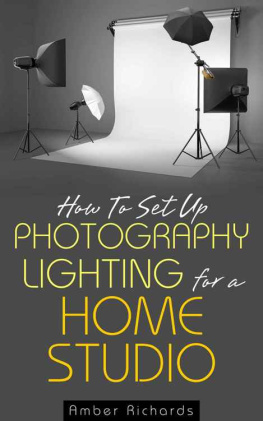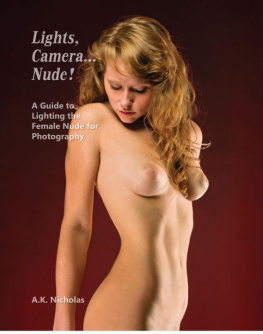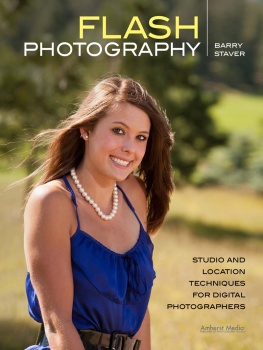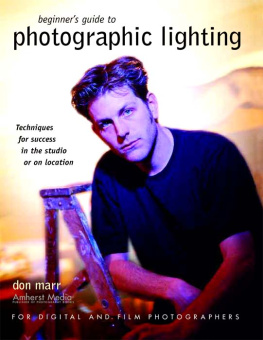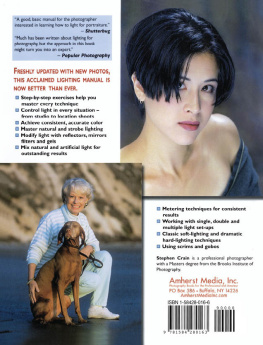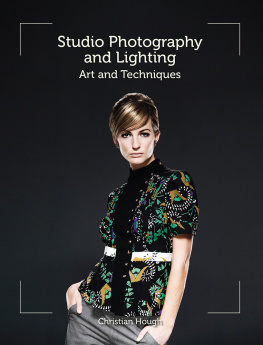Copyright Amber Richards 2013 All Rights Reserved.
This book is intended for the beginner or hobbyist photographer, wanting to learn more about lighting, to include perhaps setting up a small home studio. When I was just starting out and a total newbie to photography, at times I found the learning curve quite frustrating. Although there are many excellent resources out there, I found personally at the ver beginner levels, that many of the books, resources and tutorials, were simply over my head. Once I got more basic knowledge under my belt, I could then understand what they were communicating. The authors seemed to assume I knew more than I did, and key building blocks were missed.
You'll find early on in this book that there will be images of lighting components as well as what each piece of equipment is called, with a short description of what it is. If you already know this, you may want to skip that portion. When I started out, it would be been very helpful for me to see these in order to visualize what technology specifically was being referred to, so my hope is that it will provide value to some readers.
In the past few years or so, there have been many people who have gotten into photography as a hobby. One reason for this is the DSLR or the Digital SLR cameras, which are easily available, affordable and take great quality pictures. The shutterbug can be quite contagious as one begins to master new techniques. It is also a challenging hobby as well since there is always more to learn.
Social media venues such as Facebook, Instagram, Flickr, and Tumblr, have made it simpler than ever to share your photos with others.
Taking beautiful photos, (some of which may even be considered professional) has become easier than ever, many photography enthusiasts are considering taking their passion to the next level by turning it into a business. Nowadays many simple birthday parties have a photographer covering the event. Gone are the days where your Uncle with the cheap film camera is the official photographer. Today, semi-professional and even professional photographers are being hired to cover family events.
A few years ago, no one had ever heard of an engagement photo shoot, or a postnup shoot, a debut shoot, a baby bump shoot, and a new born shoot, toy photography, product photography, etc. But now all these shoots (and so many more) are part of everyday life; this goes to show that the demand and need for the services of photographers has gradually increased these past years.
You might already be considering bringing your passion for photography to the next level, whether you will be pursuing it professionally or as a serious enthusiast, you may want to consider setting up your own home studio.
If youve gotten to the point in your hobby or small business that you want to set up your own photography studio in your home, you might be asking yourself how you should go about it.
You might possess most of your equipment, except for the lighting. This can be tricky because it all depends on the room size, the natural and artificial lighting already available, not to mention the color of the walls, carpet and/or flooring. So first things first, lets go over some basics.
There are definitely many advantages in setting up your own home studio, the main benefit being that you can save a lot of money, because you have your very own home studio. There are many commercial studios that will allow you to rent their studio and equipment for a certain amount of money, but if you have your own home studio then you no longer have to spend extra to rent a studio and the required lighting equipment.
If you dont have your own studio, aside from having to pay to rent for the use of a commercial studio, you would also need to schedule your photo sessions around their schedule. When you have your own studio you dont have to work on someone else's schedule. You never know when inspiration will strike and having a home studio ready for you to use at any time, will definitely be beneficial to your growth as a photographer.
One of the benefits of studio photography is that you are in absolute control of all the elements within that space, and this is because you control all lighting aspects in that environment. People often have this idea that working in a home studio, or other photography studio means being in a controlled and formal environment. That is not always the case since there is still a lot of room for creative situations that you can try out in your home studio. You may in fact, discover some very dramatic effects that are stunning in your studio work.
When setting up your own home photography studio, you might want to consider that some photography studios have glass areas or windows, that allow natural light to spill in. Other studios known as blackout studios do not have any natural light coming inside the room and they rely solely on the lighting equipment being used in the studio. Whether you would choose one over the other, would depend on how you would want to work with lights, natural or artificial.
Any budding photographer knows the importance of lighting when it comes to taking photos; it is basically why we can capture images on film or in a digital sensor. Light is our means of communicating and translating what we see from our view finder to our images or photos. It directly affects the subject and the image. Without it, you'll have to raise your ISO to 1600, 3200, or even 12800, use a tripod, slow down the shutter speed, and open your aperture all the way to a decent exposure.
Lighting will give you flexibility and control in whichever area of studio photography you would like to explore. Unlike natural light, which varies depending on the time of day or weather, it changes, even during the same shoot, forcing the photographer to continually adapt to the shifts in light. Studio lighting will allow you to place the light where you want it, where you want the light to fall, and how much light you want. That is why when you are setting up your very own home studio you have to make important decisions when it comes to lighting, so that it is done correctly. It also allows for a greater degree of creative lighting in many situations.
When you have the right lighting equipment you will be able to try and experiment on a lot of different photographic techniques and experiments. This is especially good for the creative photographer that gets bored easily; the possibilities are endless!
Investing in getting photography equipment and what to do if you are on a budget
The choice of what equipment to start buying for your home photography studio will be like mapping out your journey before you take the trip. Before laying out the path, we have to find out what we need, to travel in order to get from point A to point B.
A few things that will cross your mind will be whether it would be advisable to splurge or be thrifty with your investment for lighting equipment for your studio. It's all going to depend on the budget that you are working with, what type of photography you plan to shoot, and what your future plan with the equipment is.
If you look around the internet, you might read a lot suggesting investing more on expensive equipment. This may set you back and have you thinking twice about setting up your own photography studio at home. But you must consider in the long run whether you'd be benefiting from the better performing equipment. Sometimes the saying, "you get what you pay for" is very true in photography lighting equipment.
It may be wise and advisable to invest in more expensive lighting and photography equipment if you can, but it is not necessarily required. Now if you don't have the budget at the moment, to purchase expensive lighting equipment, you should not lose hope and give up on setting up your own home photography studio. It is still possible to have your own studio, even while working on a tight budget. You can purchase less expensive starter equipment to begin with and upgrade as soon as you can. Sometimes you can also find good quality lighting that is used, from a photographer who is upgrading their equipment.

